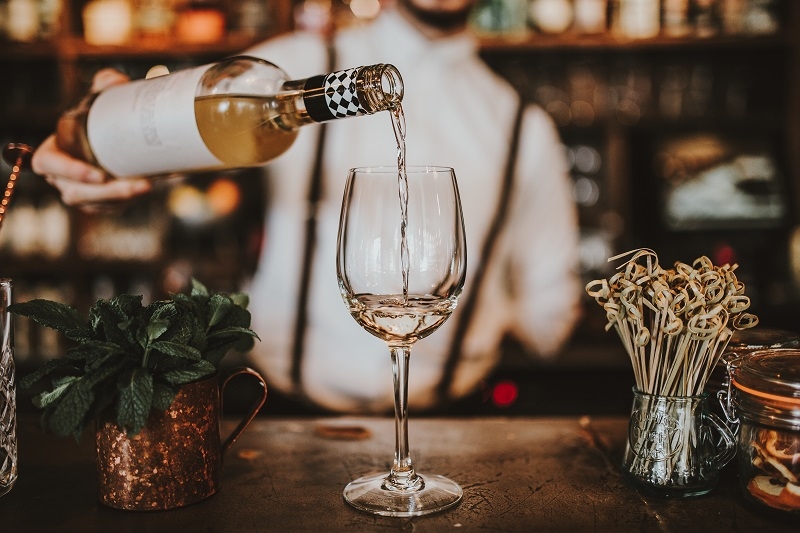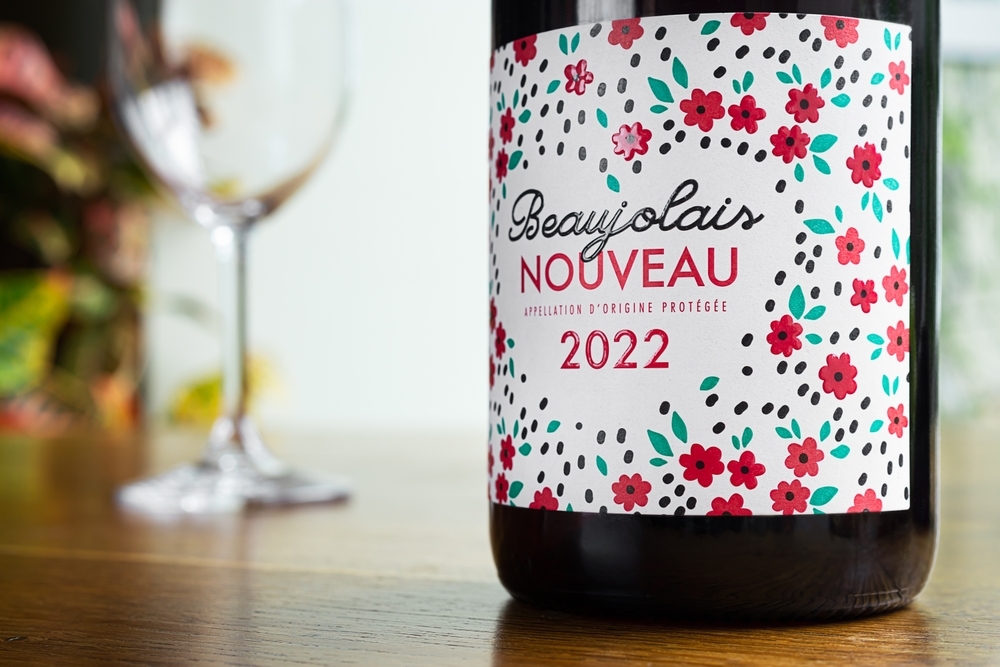Explore the Delicious Orange Wine: The Best Tasting Journey

With its striking hue and distinctive flavor profile, orange wine has been gaining attention among wine enthusiasts and connoisseurs. This unique style of wine offers an intriguing blend of ancient winemaking techniques and modern appreciation, providing a tasting experience unlike any other. Let's delve into the world of orange wine, from its rich history to its perfect food pairings.
Understanding Orange Wines
Despite its name, orange wine is not made from oranges. Instead, it is a white wine made using a technique typically reserved for red wines. The process involves fermenting white grape varieties with their skins and seeds, known as skin contact or maceration. This technique imparts a deep orange or amber color to the wine and enriches it with tannins and complex flavors not usually found in traditional white wines.
The winemaking process for orange wine involves allowing the juice to remain in contact with the grape skins for extended periods. Depending on the winemaker's preference, this can range from a few days to several months. The prolonged contact with the skins and seeds adds depth and complexity to the wine, resulting in a rich and layered flavor profile. The tannins extracted during this process also contribute to the wine’s structure, giving it a more substantial mouthfeel than typical white wines.
History of Orange Wines
Orange wine dates back thousands of years to ancient winemaking traditions in the Caucasus region, particularly in Georgia. Georgian winemakers used clay vessels called qvevri to ferment and age the wine, a practice that continues today. These qvevri were buried underground to maintain a stable temperature during fermentation. Over time, this method spread to other regions, including Slovenia and northeastern Italy, where it gained popularity.
The resurgence of orange wine in recent years can be attributed to the growing interest in natural and traditional winemaking practices. Modern winemakers have embraced the ancient techniques, seeking to create wines that are not unique but also reflect the terroir and the natural qualities of the grapes. This revival has renewed appreciation for orange wine, with producers and consumers exploring its diverse and intriguing flavors.
Description of Orange Wine Tastes

Aromatic Complexity
Orange wines often exhibit intense aromas, ranging from dried fruit and nuts to herbs and spices. The extended skin contact during fermentation enhances the wine’s aromatic profile, resulting in a complex and inviting bouquet.
Rich Texture
Due to the extended skin contact, these wines have a fuller body and more pronounced tannins than typical white wines. This gives orange wine a more robust and structured mouthfeel, similar to red wine.
Fruity and Earthy Notes
Flavors can include ripe citrus, stone fruits like apricot and peach, and earthy undertones such as tea, honey, and dried leaves. The combination of fruit and earthiness creates a unique and balanced flavor profile.
Distinct Acidity
Orange wines maintain a vibrant acidity, balancing their rich and sometimes robust flavor profiles. This acidity adds freshness and liveliness to the wine, making it a versatile option for food pairings.
Must Read: Celebrating National Orange Wine Day: A Rich Culture of Wine
Perfect Food Pairing with Orange Wine
Cheeses
Aged and robust cheeses like Gouda, Roquefort, and Taleggio complement the wine’s bold flavors. Their saltiness and richness balance the wine’s tannins and acidity, creating a harmonious pairing.
Seafood
Rich seafood dishes such as grilled octopus, smoked salmon, and seafood paella pair well with orange wine’s acidity and tannins. The wine’s vibrant acidity cuts through the richness of the seafood, enhancing the overall dining experience.
Spicy Foods
The wine’s robust nature can handle the heat of spicy dishes, including Indian curries and spicy Mexican cuisine. The tannins help to mellow the spiciness, while the acidity provides a refreshing counterpoint.
Root Vegetables
Roasted root vegetables like carrots, sweet potatoes, and beets highlight the earthy flavors of orange wine. The caramelized sweetness of the vegetables complements the wine’s fruity and earthy notes.
Mediterranean Cuisine
Dishes such as lamb tagine, ratatouille, and hummus bring out the wine’s aromatic and savory qualities. The spices and herbs used in Mediterranean cuisine enhance the wine’s complex flavor profile.
Preferred Grapes in Orange Wine
Ribolla Gialla
It is widely used in northeastern Italy and Slovenia and produces wines with rich texture and complex aromas. Ribolla Gialla is known for its thick skins, which contribute to the wine’s tannic structure and depth of flavor.
Malvasia
Known for its aromatic qualities, Malvasia contributes floral and fruity notes to orange wines. This grape variety often adds complexity and richness to the wine’s aromatic profile.
Rkatsiteli
A traditional Georgian grape, Rkatsiteli is often used in qvevri wines and imparts a balance of acidity and tannins. This grape variety is well-suited to the extended skin-contact fermentation, resulting in wines with a distinctive character.
Chardonnay
While more commonly associated with white wines, Chardonnay can also be used to add body and richness to orange wine production. Its versatility allows it to take on the characteristics of the winemaking process, resulting in a well-rounded and balanced wine.
Sauvignon Blanc
This grape variety adds a fresh and zesty character, balancing the wine’s tannic structure. Its high acidity helps keep the wine vibrant, even with extended skin contact.
Check This Out: Uncorking the Future: Wine Trends to Savor in 2024
Flavors That Come From Orange Wine
- Citrus Fruits: Orange peel, lemon zest, and grapefruit. These bright and zesty flavors add freshness and liveliness to the wine, balancing its more robust characteristics.
- Stone Fruits: Apricot, peach, and nectarine. The sweet and juicy flavors of stone fruits contribute to the wine’s fruitiness and complexity.
- Herbs and Spices: Chamomile, ginger, and turmeric. These aromatic and savory notes add depth and intrigue to the wine’s flavor profile.
- Nuts and Dried Fruits: Almonds, walnuts, and dried apricots. The nutty and dried fruit flavors enhance the wine’s richness and provide a satisfying finish.
- Earthy and Savory Notes: Tea leaves, honey, and baked bread. These earthy and savory flavors add a layer of complexity to the wine, making it an intriguing and memorable tasting experience.
Top Orange Wines Around The World
Italy
Gravner Ribolla Gialla Anfora is produced in Friuli. This wine is aged in amphorae. It offers a deep amber color and complex flavors of dried fruit and nuts. Josko Gravner, a pioneer of the natural wine movement, uses ancient methods to create wines that reflect the terroir and tradition of the region.
Radikon Oslavje is a blend of Sauvignon Blanc, Chardonnay, and Pinot Grigio from Friuli, known for its robust structure and rich, savory notes—Stanko Radikon’s commitment to natural winemaking results in expressive and unique wines.
Slovenia
Movie Lunar is made from Ribolla Gialla, a Slovenian wine aged on its lees, resulting in a creamy texture and vibrant acidity. Ales Kristancic, the winemaker, uses biodynamic practices to enhance the wine’s natural qualities.
Klinec Medana is produced in the Brda region, this wine offers intense aromas of dried fruits, herbs, and spices. The Klinec family’s dedication to organic farming and traditional winemaking methods shines through in their distinctive orange wines.
Georgia
Pheasant’s Tears Rkatsiteli is a traditional qvevri wine with dried apricot, tea, and honey flavors. John Wurdeman, an American artist-turned-winemaker, collaborates with Georgian farmers to produce wines celebrating the country’s rich winemaking heritage.
Iago's Wine Chinuri is made from the Chinuri grape, known for its bright acidity and earthy undertones. Iago Bitarishvili’s commitment to organic farming and traditional methods results in authentic and expressive wines.
United States
Donkey & Goat Stone Crusher is a Californian orange wine made from Roussanne, offering flavors of peach, orange zest, and earthy notes. Jared and Tracey Brandt, the winemakers, focus on natural and sustainable practices to create wines that are true to their terroir.
Channing Daughters Ramato is produced in Long Island, New York. This Pinot Grigio-based orange wine exhibits a beautiful copper hue and red berries and herbs flavors. Christopher Tracy, the winemaker, uses skin-contact fermentation to create a unique and delicious wine.
Conclusion
Orange wine offers a unique and exciting tasting experience that combines ancient winemaking traditions with modern appreciation. Its rich history, complex flavors, and versatile food pairings make it a fascinating option for wine enthusiasts and connoisseurs. Exploring the orange wine world is rewarding whether you are a seasoned wine lover or a curious newcomer.
This content was created by AI
No keywords available
-1717753922-r.jpg)


